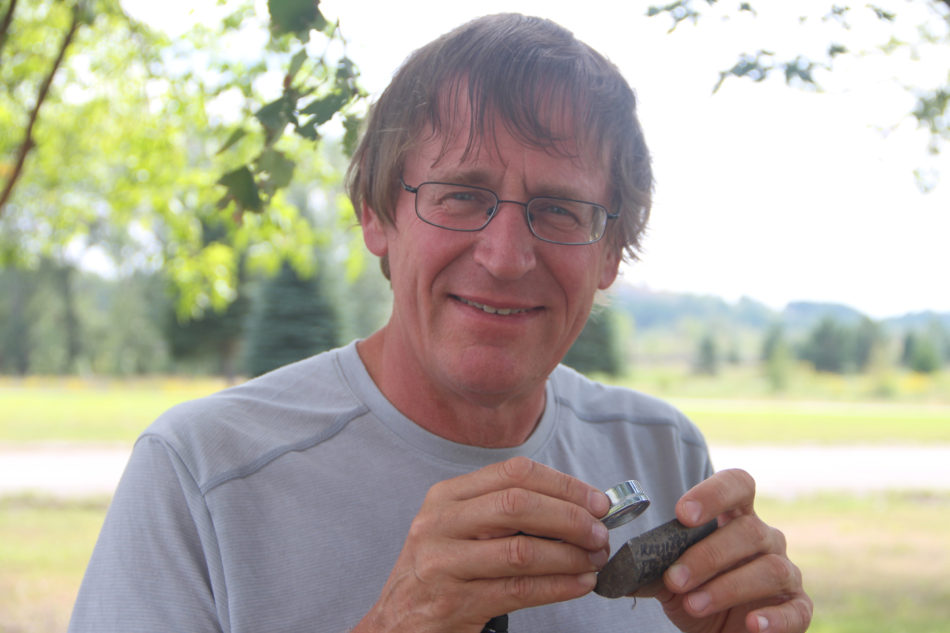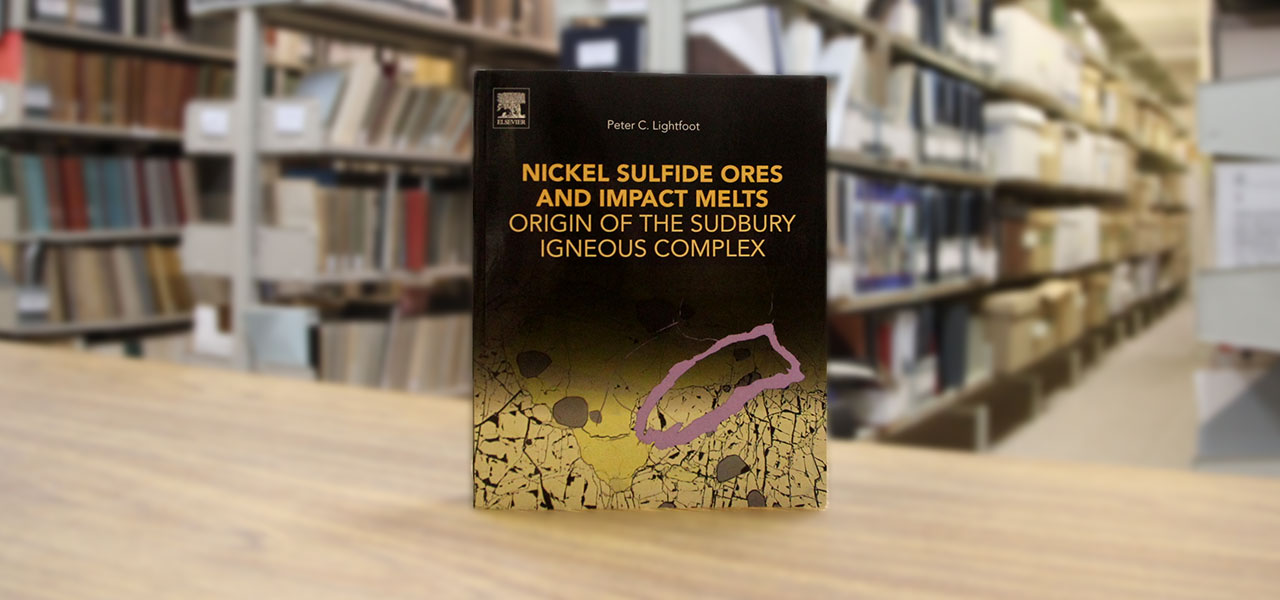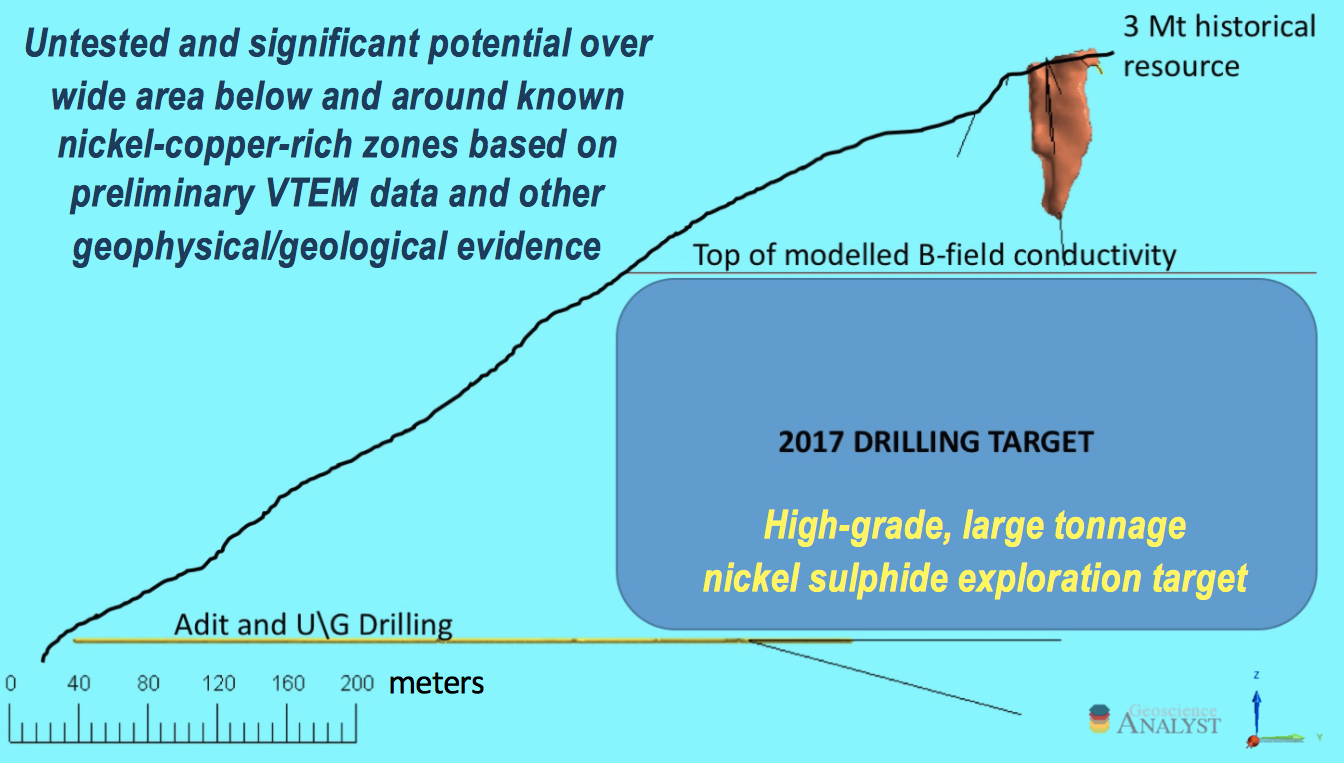BullMarketRun.com Special Report – Part 2
Dr. Peter Lightfoot – Renowned Nickel Sulphide Expert – Eyes A Possible Game-Changing Discovery In B.C.

There are few individuals in the world with a better understanding of Nickel sulphide deposits, and the Nickel industry in general, than Dr. Peter Lightfoot. The highly respected geologist is now running his own business, Lightfoot Geoscience, after carving out a very successful 20-year career with Inco and Vale that began shortly after the infamous Diamond Fields’ discovery at Voisey’s Bay.

Dr. Lightfoot recently developed a major interest in the prolific Eskay Camp in northwest British Columbia, famous of course for its spectacular high-grade Gold and Silver and one of the richest ore discoveries in history – Eskay Creek. To the southeast of Murray Pezim’s great find, Pretium Resources (PVG, TSX) just poured its first Gold at Brucejack – on track to become one of the world’s premier Gold mines as it ramps up to commercial production at a rate of 500,000 ounces per year (16 g/t Au).
What has sparked more than just geological curiosity in Dr. Lightfoot is the growing recognition in recent months that the Eskay Camp could also host something resource investors generally would never expect in British Columbia – one or more Nickel-Copper-rich massive sulphide deposits. The specific area of interest is approximately 11 miles southwest of Eskay Creek where Garibaldi Resources (GGI, TSX-V) assembled a 63 sq. km land package last year (E&L Project) around Nickel Mountain, shortly after the bear market bottom. A modest but nonetheless significant near-surface drilling discovery was made at Nickel Mountain 50 years ago, but events unfolded in such a way that the discovery was never properly followed up on. Besides, those large Nickel sulphide deposits – they all occur in other jurisdictions, don’t they? The assumption is that B.C. is all about Gold, Silver and Copper.
“The E&L is in the top quartile of early stage Nickel sulphide projects in the world,” Dr. Lightfoot now declares. “The model opens up opportunities in non-traditional Nickel sulphide environments such as the Canadian Cordillera (includes the Eskay Camp).”
After an exhaustive collection and reinterpretation of historic data, some field exploration last summer and a just-completed VTEM survey that revealed a series of promising conductors, Dr. Lightfoot leads a list of geologists who are convinced there’s much more to the E&L story. As a result he joined the Garibaldi Advisory Board in March, and the company’s summer exploration program including drilling is now about to test some exciting theories. The first drill holes will take direct aim at a bull’s-eye massive sulphide target including part of the historic resource and a large area defined by VTEM.

Prior to getting into some fascinating insights from Dr. Lightfoot, below is a list of known compelling facts regarding the E&L compiled by BMR’s research team:

Suffice to say, Dr. Lightfoot is bullish on the E&L – in geologist lingo, he’s optimistic but also appreciative of the fact that much still needs to be learned. This will be a “critical” summer, he said – something everyone can agree on.
Dr. Lightfoot’s E&L Analogue
Dr. Lightfoot’s hypothesis – we stress that this is a hypothesis at the moment – is that the Nickel Mountain setting shares similarities to many of the small intrusion orogenic Nickel deposits from Western China such as Karatungk, Huangshandong and Hunagshan – they are all in what’s referred to as “transform faults”. Jinchaun, also part of this belt and one of the world’s largest Nickel sulphide deposits, is perhaps an older equivalent, he believes.
In layman’s terms, an orogenic belt is a mountain range formed by compression of 2 plates at a continental margin. Strike-slip faults in the Western China Nickel Belt created open-system magma ‘highways’, resulting in highly efficient accumulations of Nickel sulphides. The same scenario may account for any major Nickel-Copper rich sulphide deposit that’s delineated in the heart of the Eskay Camp at the E&L Project.
“There has been a recognition in recent years that many of the important Nickel deposits are associated with very small intrusions that reside in cross-linking structures within strike-slip fault zones,” Dr. Lightfoot explained. “This model explains the development of sulfide ore deposits in small intrusions that are emplaced along ‘magma highways’ within these fault zones. The majority of Nickel sulfide ore deposits belong to this group. This model opens up opportunities in non-traditional Nickel sulfide environments such as the Canadian Cordillera.”

“The key control in many different geological environments is the development of transform (strike-slip) faults that provide paths for magma to migrate from mantle to surface and form small intrusions on the way,” Dr. Lightfoot continued. “This can happen in orogenic belts as well as rifted cratonic margins. Back when E&L was being explored by Sumitomo, this concept was not understood; even now it represents a hypothesis. But the enormous amount of information that has appeared on the Chinese Nickel deposits is very compelling evidence. Back in the 1960’s Sudbury was the really big Camp. Thompson and Talnakh had just been found, Jinchaun was a small deposit hidden in communist China when it found in 1959, and the importance of komatites and Kambalda was not recognized until the late 60’s. The exploration models for Nickel were in their infancy when Sumitomo was exploring E&L and the plate tectonic context of mineral deposits would not appear for a couple of decades after this.”
Intrusion Size – Where Many Investors Get It Wrong!
Click on the arrow to listen to more of Jon’s interview as he questions Dr. Lightfoot about what constitutes a “small intrusion” and why these features can be so prospective for major Nickel sulphide deposits:
Two other key points regarding the E&L from Dr. Lightfoot:
- Initial helicopter-borne electromagnetic survey data point to significant conductivity associated with the known mineral zones and additional targets along strike that require follow-up;
- The quality of the mineralization at the E&L, as measured by the Nickel tenor, is high and it has potential by-product credits.
We’ll have more with Dr. Lightfoot in the days ahead as we continue to investigate the possibility of the Eskay Camp hosting yet another remarkable deposit – in this case, one that would rewrite the geological playbook for the region.
Click on link below for Part 1 of our feature.
Where Some “Shock And Awe” Could Come From To Ignite The Venture
Note: John, Jon and Daniel hold share positions in GGI.
Disclaimer:

13 Comments
What is a tenor ?
In our next piece with Dr. Lightfoot, Donald, he discusses the importance of Nickel tenor and what it means. Below is a portion of his comments:
“The Nickel tenor of the material is the Nickel concentration in the sulphide part of the rock. Grade is all the silicate plus the sulphide. The tenor is actually how much Nickel is in that sulphide component.” (need to measure the sulphur content)
A couple of other notes on tenor…high Nickel tenor, such as the E&L has (4.8% to 8%), indicates a higher quality style of mineralization…very important obviously when it comes to potential economics…high tenor often means a stronger presence of a mineral like pentlandite, the principal Nickel sulphide – the material you want to concentrate, what you want to send from the mill to the smelter.
Jon – the updated fact sheet indicates the VTEM results from geotech will be available by tomorrow; am I correct in assuming that the results then need to be reviewed by Garibaldi’s people before we’ll see any sort of news release?
Charles, yes, final results from Geotech by tomorrow, and Geotech’s own people will provide their interpretation but Garibaldi’s Nickel team will review all the data and that should translate into news next week. Alan King, highly regarded in the industry, is GGI’s lead geophysicist on the E&L.
When does Ggi drilling begin and when will thise drill results be published approximately?
Drilling in July, Donald, and specific timing will be determined by what ground truthing of conductors north of E&L reveals. As far as drilling goes, the nice thing about a massive sulphide system is that you know when u are into massive sulphides.
Next week could provide first visuals from ground truthing.
Thanks Jon.
Hi Jon, GGi tenors or .castle CSR – so many choices what are your thoughts?
, if Ggi has nickel tenors then CSR has cobalt , silve r, and nickel candy store? The recent chip samples at castle level one of 11 levels from a 90 metre vein and waste pile data from Beaver area. June 12 news
With cobalt running 26 us / lb, nickel at 4.60 / lb and silver at 200 us per lb ( 16 us /lb X 12 ), it seems like CSR will be mining cobalt for free if all these inputs are recovered. What are your thoughts ?
1.8% cobalt, 8.6% nickel and 25.2 g/t silver (CSR-17-S03)
1.6% cobalt, 7.6% nickel and 32 g/t silver (CSR-17-S04)
0.81% cobalt, 5.9% nickel and 4.1 g/t silver (CSR-17-S01)
Underground sampling covering multiple target areas continues at Castle ahead of drilling.
…. initial results which demonstrate how Castle features strong upside potential for unmined cobalt and base metal mineralization throughout 11 levels covering a footprint 727 meters east-west, 455 meters north-south and 258 meters deep. Significantly, our proprietary Re-2OX process is designed for high recovery of multiple metals and elements, opening opportunities that simply didn’t exist decades ago at this mine or throughout the northern Ontario Silver-Cobalt district.
Castle Sampling Details
The first five chip samples (CSR-17-S01 through CSR-17-S05) averaged 1.06% cobalt, 5.3% nickel and 17.5 g/t silver. They were taken along a 4-meter length of a vein as wide as 30 cm a short distance inside the adit. The vein pinches and swells for an estimated 90 meters….
Underground sampling covering multiple target areas continues at Castle ahead of drilling….””””
my response Donald, would be CSR, because the payback will be a lot closer then GGI .
good morning bmrgang i bring you the latest press release from heron resouces(her txch) HERON SECURES COMPLETE A$240-MILLION (AUSTRALIAN) FINANCING PACKAGE FOR DEVELOPMENT OF ITS WOODLAWN ZINC-COPPER PROJECT(1) regards walter
Donald – CSR maybe mining before GGI; however GGI may have a discovery on it’s hands well before CSR start mining. Not saying CSR won’t appreciate in price very soon but comparing mining vs a new discovery.
You have to look at your individual investing style…. but nothing beats a new nickel discovery for leverage. This really has the potential of Noronts initial discovery… you have to have some skin in this one of you are a discovery investor. GLTA
Hi Jon
northern miner article explains importance of cobalt metallurgical testing-
Is this the type of stuff Csr is working on Jon?
“Commentary: Battery manufacturers want more from lithium, cobalt, graphite feedstock suppliers”””
“”””….Cobalt resources are widespread but the metal is of particular concern since it is mostly recovered as a by-product of nickel or copper mining, with currently just one primary source.
There is a complex relationship between battery chemistry and performance: cobalt hydroxide is used in nickel-cadmium and nickel-metal-hydride batteries for portable electronics and electric vehicles; cobalt oxide is used in lithium-cobalt oxide batteries for consumer electronics; and cobalt sulphate is mainly used in lithium-nickel-cobalt-alumina and nickel-manganese-cobalt batteries for electric vehicles and power tools.
As for lithium battery chemicals, battery grade cobalt sulphate specifications may require certain impurities be in the parts per million range, particularly iron, copper, lead and cadmium….””””